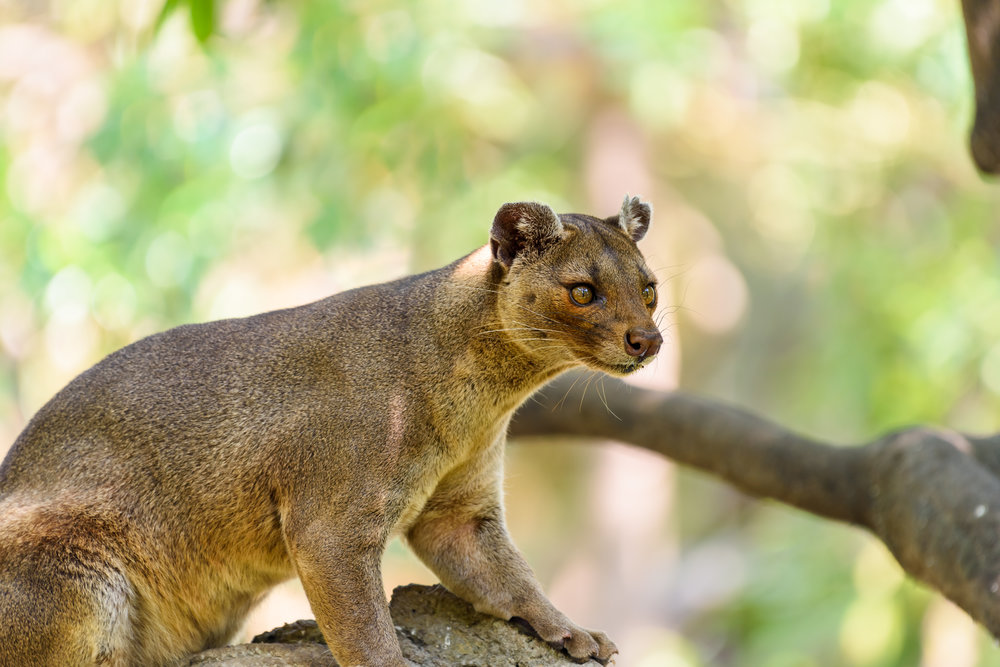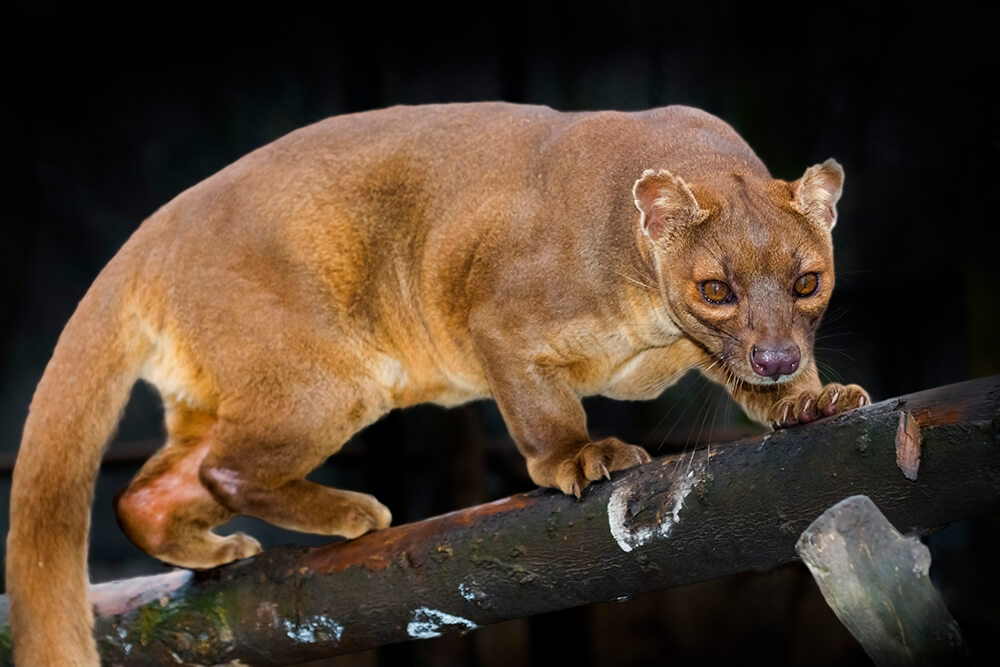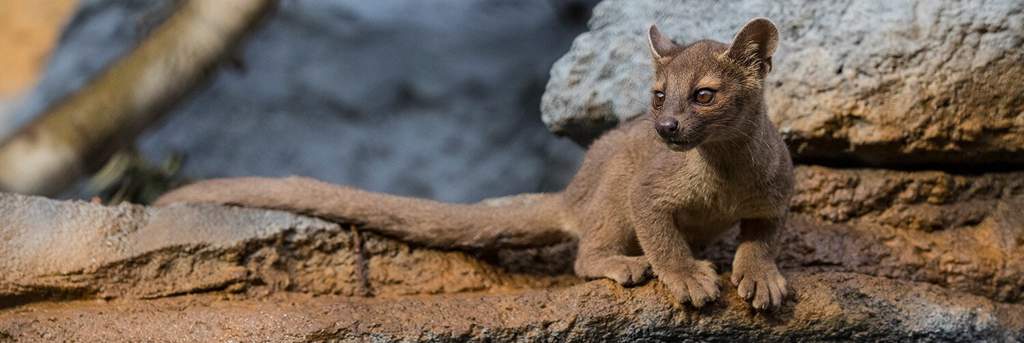





 Fossas are the largest carnivores on the island of Madagascar, where they feed on a varieties of mammals, including lemurs. They typically hunt and live alone. Like most species on Madagascar, fossas are threatened by habitat loss. |
 The fossa hunts and eats birds, reptiles, and small mammals (mostly lemurs). |

|
This animal confuses people at first—even its name. It’s a fossa, pronounced FOO-sah (some people say “FOOSH” instead). And since it looks like a long-bodied catlike dog with a monkey’s long tail, people wonder what kind of creature it is! Fossas belong to their own group, but are related to the mongoose and civet.
A stealthy predator, the fossa hunts by day or night. It often travels high in the trees in search of its favorite prey: lemurs. Rodents, birds, reptiles, and fish might also end up as a meal. A fossa spends lots of time up in the trees, but is also comfortable on the ground.
Although they chirp, purr, and yelp, fossas mostly communicate through scent. Each fossa has scent glands on its chest and under the base of the tail. Rubbing the glands on rocks, trees, or even just the ground leaves a message to other fossas. These animals tend to be solitary, so leaving scent signals can help them either stay out of each other's way, or come together for mating.